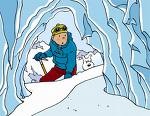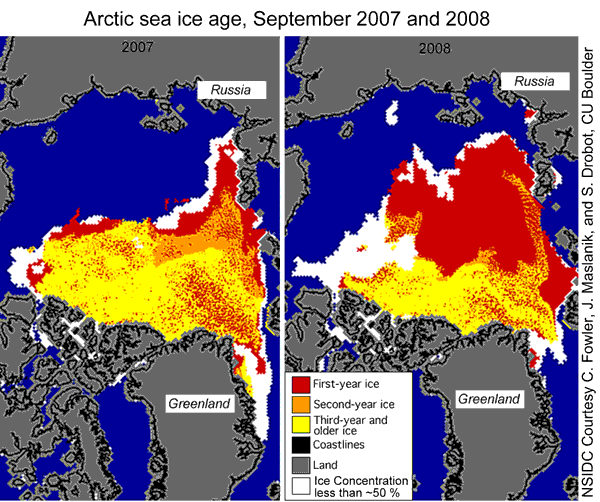 The work of the Swedish and Russian team on the Yakov Smirnitsky has finally found its way into the mainstream media, with Steve Connor at the Independent in London reporting the final post at the ISSS-08 blog I’ve been linking to for the last month or two. It’s not good news – they’ve found dramatic evidence of “methane chimneys” – bubbles of methane emerging form the sea floor and reaching the surface (instead of dissolving), and recorded atmospheric concentrations 100 times the normal background level. Connor reports on an email exchange with the Swedish team:
The work of the Swedish and Russian team on the Yakov Smirnitsky has finally found its way into the mainstream media, with Steve Connor at the Independent in London reporting the final post at the ISSS-08 blog I’ve been linking to for the last month or two. It’s not good news – they’ve found dramatic evidence of “methane chimneys” – bubbles of methane emerging form the sea floor and reaching the surface (instead of dissolving), and recorded atmospheric concentrations 100 times the normal background level. Connor reports on an email exchange with the Swedish team:
“We had a hectic finishing of the sampling programme yesterday and this past night,” said Dr Gustafsson. “An extensive area of intense methane release was found. At earlier sites we had found elevated levels of dissolved methane. Yesterday, for the first time, we documented a field where the release was so intense that the methane did not have time to dissolve into the seawater but was rising as methane bubbles to the sea surface. These ‘methane chimneys’ were documented on echo sounder and with seismic [instruments].”
At some locations, methane concentrations reached 100 times background levels. These anomalies have been seen in the East Siberian Sea and the Laptev Sea, covering several tens of thousands of square kilometres, amounting to millions of tons of methane, said Dr Gustafsson. “This may be of the same magnitude as presently estimated from the global ocean,” he said. “Nobody knows how many more such areas exist on the extensive East Siberian continental shelves.
In his piece, Connor uses the “standard” global warming potential for methane of 20 times CO2 (actually 25 is the official IPCC number), and correctly notes the short atmospheric lifetime of the gas. However, over that short lifetime (around 12 years), CH4’s GWP is more like 70 times CO2. Current global methane level is about 1750 ppb (1.75 ppm), so using a GWP of 25 it has the same warming effect as 43.75 ppm CO2. On the shorter 10 year time scale, that’s more like 122 ppm CO2. But Semiletov and his team on the Yakov Smirnitsky have measured concentrations 100 times greater than “normal”, which implies a local warming effect equivalent to 12,200 ppm CO2.
Luckily, it’s getting dark up there, but methane release on that scale might slow down the winter cooling in the region of the chimneys. Methane seeps in lakes can keep holes open in winter ice, so if persistent holes start appearing in the satellite maps of sea ice over the Siberian seas, we’ll know there’s a big issue (the holes would have to be huge to be seen in the data). We urgently need more info on the extent of the problem. There’s a lot of methane under the Siberian seas – we can only hope it stays there.
The NZ Herald reprints the Independent story, and the Guardian puts its own spin on it (a note of caution). This is a story that needs wider coverage, more informed scientific debate, and great deal more study. I hope Connor’s piece doesn’t get dismissed as hype, or “alarmism”. You don’t need to be an alarmist to find this stuff alarming…
Like this:
Like Loading...
 The latest satellite data shows that this summer’s snowmelt in northern Greenland was “extreme”, according to Marco Tedesco, assistant professor of Earth & Atmospheric Sciences at The City College of New York. From the press release:
The latest satellite data shows that this summer’s snowmelt in northern Greenland was “extreme”, according to Marco Tedesco, assistant professor of Earth & Atmospheric Sciences at The City College of New York. From the press release:

